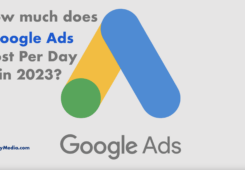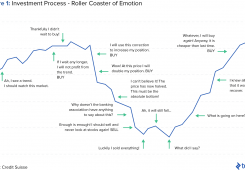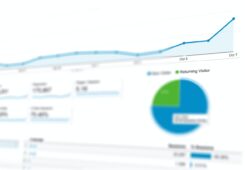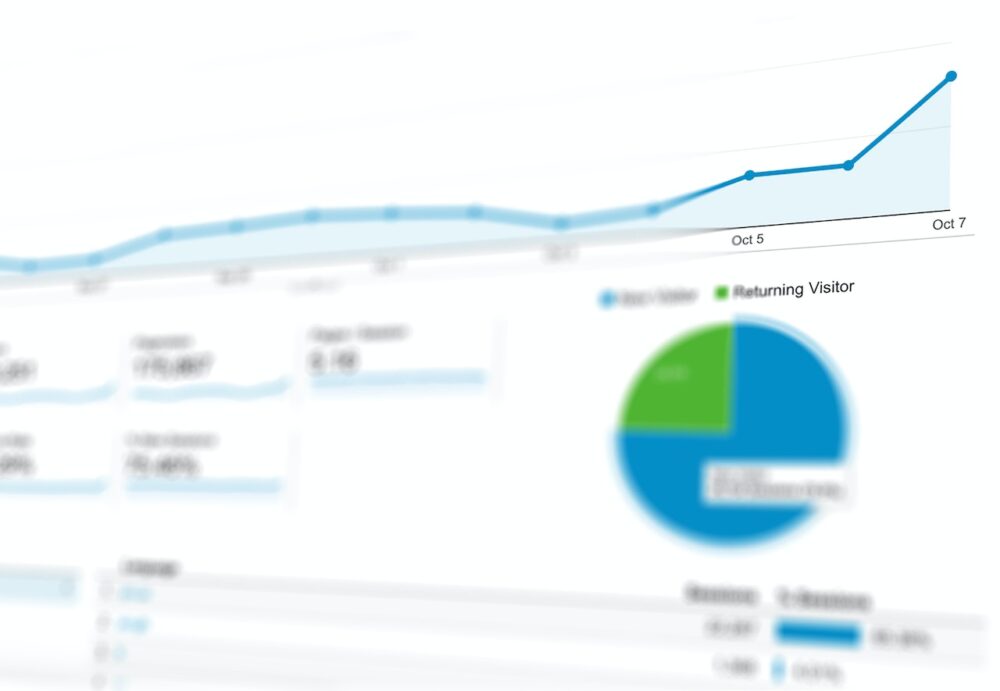An expert guide on elevating the performance of your Google Ads campaigns by improving the click-through rate (CTR). In the ever-evolving digital advertising landscape, where competition for users’ attention is fierce, a high click-through rate (CTR) can be the difference between success and mediocrity.
Unleashing the Power of Compelling Ads
As an SEO specialist and a copywriter, I understand the significance of crafting persuasive and captivating content that drives engagement and compels users to click on your ads. With an arsenal of proven strategies at your disposal, you can optimise your Google Ads to outshine competitors and leave a lasting impression on your target audience.
In this comprehensive article, we will explore a range of techniques and tactics to empower your ads with the ability to skyrocket your CTR. From creating enticing ad copy to leveraging the full potential of ad extensions, from precise keyword targeting to optimise your landing pages for seamless user experiences – we will cover it all. Get ready to unlock the secrets to enhancing your click-through rate and revolutionise the way you approach online advertising.
But before we dive into the details, let’s understand why CTR holds such paramount importance in the world of digital advertising.
Understanding the Click-through-rate: Igniting Success in Google Ads
In Google Ads, the click-through rate (CTR) stands as a testament to the effectiveness and appeal of your advertising efforts. CTR represents the percentage of users who click on your ads after viewing them, offering a direct measurement of the engagement and resonance your ads generate.
Why does CTR matter? Let’s delve into its significance:
- Visibility and Ad Rank: Google, the search engine behemoth, considers CTR as a crucial factor in determining Ad Rank. A higher Ad Rank leads to improved ad visibility on the search engine results page (SERP), ensuring that your ads grab the attention they deserve.
- Cost Efficiency: A well-optimised ad with a high CTR is rewarded with a higher Quality Score by Google. This Quality Score not only reduces the cost-per-click (CPC) but also enables you to make the most of your advertising budget. Lower CPC means you can stretch your resources further and reach a larger audience without compromising on quality.
- Conversion Potential: Attracting clicks from interested and relevant users is the first step towards achieving your conversion goals. By optimising your CTR, you increase the chances of generating qualified leads, boosting sales, and driving valuable actions on your website. Your ads become a powerful catalyst in nurturing user interest and guiding them towards meaningful interactions with your brand.
Now that we’ve established the vital role of CTR, let’s embark on an enriching journey through effective strategies that will empower you to propel your Google Ads campaigns to new heights of success.
1. Craft Compelling Ad Copy
The first step towards improving your CTR is to create engaging and persuasive ad copy. Your ad should be relevant, concise, and compelling enough to capture the attention of your target audience. Here are some tips to keep in mind:
- Keyword Optimisation: Incorporate relevant keywords into your ad copy to ensure it aligns with users’ search queries. Including keywords in the headline and description can enhance the ad’s relevance and attract clicks from interested users.
- Highlight Unique Selling Points (USPs): Identify the unique aspects of your product or service and emphasise them in your ad copy. Highlighting what sets you apart from competitors can entice users to click on your ad.
- Call-to-Action (CTA): Use a strong, clear, and action-oriented CTA to prompt users to take the desired action. Whether it’s “Shop Now,” “Sign Up,” or “Learn More,” an effective CTA can significantly impact your CTR.
2. Leverage Ad Extensions
Google Ads provides various ad extensions that allow you to include additional information and improve the visibility of your ads. Ad extensions not only make your ads more informative but also occupy more space on the SERP, increasing the chances of attracting clicks. Some popular ad extensions include:
- Sitelink Extensions: Add relevant site links to your ad, directing users to specific landing pages on your website. This provides users with more options and enhances the visibility of your offerings.
- Call Extensions: If your business relies heavily on phone inquiries, consider using call extensions to display your phone number directly in the ad. Users can easily reach out to you with a simple click.
- Structured Snippet Extensions: Highlight specific features, categories, or products by using structured snippets. This extension provides additional information and encourages users to click on your ad.
- Review Extensions: Showcase positive reviews or testimonials from satisfied customers. Social proof can significantly boost your credibility and attract clicks from users who value others’ opinions.
By leveraging ad extensions strategically, you can enhance the visibility and appeal of your ads, ultimately improving your CTR.
3. Target Relevant Keywords
Keyword targeting plays a vital role in driving relevant traffic to your website. By conducting thorough keyword research and selecting the right keywords for your Google Ads campaign, you can increase the likelihood of attracting clicks from users who are actively searching for products or services like yours. Consider the following tactics:
- Broad Match Modifier: Utilise the broad match modifier to ensure your ads show for relevant variations and related searches of your target keywords. This approach can expand your reach while maintaining relevancy.
- Negative Keywords: Identify and include negative keywords in your campaign to prevent your ads from appearing for irrelevant searches. This helps you filter out unwanted traffic and improves the overall CTR by targeting more qualified users.
- Long-Tail Keywords: Incorporate long-tail keywords into your campaign. Although they may have lower search volumes, they often indicate higher user intent and can result in more qualified clicks.
Proper keyword targeting ensures that your ads reach the right audience, increasing the chances of attracting clicks and improving your CTR.
4. Optimise Landing Pages
While it’s essential to create compelling ads, it’s equally important to provide a seamless user experience once users click on your ads. Optimising your landing pages can significantly impact your CTR and conversion rates. Consider the following best practices:
- Relevance: Ensure your landing page aligns with the ad copy and keywords used in your Google Ads. When users land on a page that fulfils their expectations, they are more likely to stay engaged and take the desired action.
- Clear Call-to-Action: Place a prominent and clear call-to-action on your landing page. Whether it’s a form submission, purchase button, or subscription link, make it easy for users to understand what action you want them to take.
- Mobile-Friendly Design: With the majority of internet users accessing websites through mobile devices, it’s crucial to optimise your landing pages for mobile. Ensure fast loading times, responsive design, and easy navigation to provide a seamless mobile experience.
By delivering a cohesive and user-friendly experience from ad click to landing page, you can increase engagement, and conversions, and ultimately improve your CTR.
5. A/B Testing and Continuous Optimisation
Optimisation is an ongoing process, and A/B testing is a powerful technique to fine-tune your ads and improve their performance. By testing different variations of your ad copy, headlines, CTAs, and landing page elements, you can gather valuable data and insights to optimise for higher CTR. Consider the following steps:
- Identify Variables: Choose the elements you want to test, such as headlines, ad copy, or CTAs.
- Create Variations: Develop multiple versions of your ads, each with a single variable changed.
- Monitor and Analyse: Run your ads simultaneously and monitor their performance. Use Google Ads analytics to measure CTR, conversion rates, and other relevant metrics.
- Implement Winners: Identify the variations that perform the best and implement them into your campaign. Continue testing and optimising to maintain and improve your CTR over time.
A/B testing allows you to make data-driven decisions and optimise your ads based on actual performance, leading to higher CTR and better campaign results.
Why improving the Click-Through Rate (CTR) of My Google Ads is important?
Improving the click-through rate (CTR) of your Google Ads is a crucial step in maximising the performance of your advertising campaigns. By implementing the strategies outlined in this article, you can increase the likelihood of attracting clicks from your target audience and driving valuable traffic to your website. Remember to create compelling ad copy, leverage ad extensions, target relevant keywords, optimise your landing pages, and continuously A/B test and optimise your ads.
Achieving a high CTR requires a combination of creativity, strategic thinking, and data analysis. By consistently monitoring and optimising your Google Ads campaigns, you can not only improve your CTR but also enhance your overall return on investment (ROI). Remember, the digital advertising landscape is dynamic, so it’s essential to stay informed about industry trends and adapt your strategies accordingly.
Now armed with these insights and actionable tips, you’re well on your way to improving the click-through rate of your Google Ads and driving greater success in your online advertising endeavours.
If you need help with your Google Ads campaigns, PMAX Campaign or want a free audit, please reach out to our Google Ads Specialist Team to discuss your marketing strategies and budgets in more detail.



































